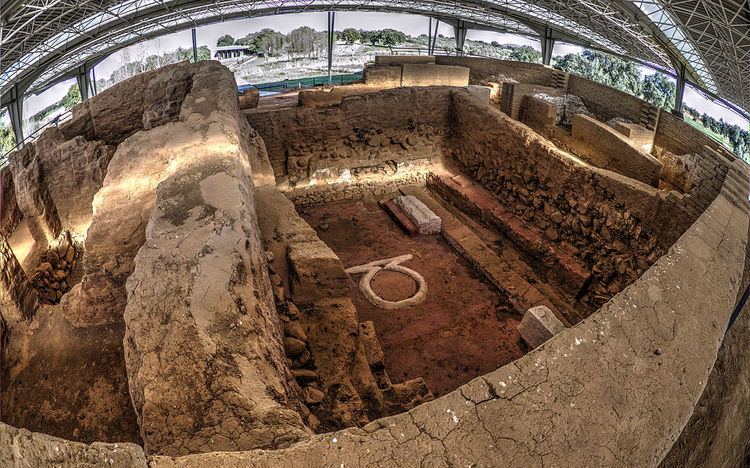Phone +34 629 23 52 79 | ||
 | ||
Similar Archaeological Museum of Badajoz, Mausoleum of Pozo Moro, Tejada La Vieja, Museo del Granito, Nertobriga Concordia Iulia | ||
Arqueoudima cap tulo 5 el palacio de cancho roano zalamea de la serena badajoz
Cancho Roano (sometimes Cancho Ruano) is an archaeological site located in the municipality of Zalamea de la Serena, in the province of Badajoz, Spain. Is located three miles from Zalamea de la Serena in the direction of Quintana de la Serena Quintana, in a small valley along the stream Cagancha.
Contents
- Arqueoudima cap tulo 5 el palacio de cancho roano zalamea de la serena badajoz
- En busca de la atl ntida cancho roano
- References
Cancho Roano is the best preserved Tartessian site. It dates back to at least the sixth century BCE, although the building was expanded and modified in later centuries. Based on the dating of objects found on the site, Cancho Roano came be estimate to date from 550 BCE. The site was destroyed in a fire no later than 370 BCE. The building appears to have been ritually burned and sealed in rammed earth in a manner similar to Etruscan ceremonies.
The main body of the building is square and oriented toward the east. The building is surrounded by a deep moat, which was permanently filled with water. Although Cancho Roano's exact function is unknown, the religious character of the site is undeniable due to the presence of altars; however, the site may be a palace-shrine, judging from its defensive system.
Excavations of the site, directed by John Maluquer de Motes, began in 1978 and continued through 2001. It was declared a National Monument in 1986. The site, along with an interpretation center, is open to the public.
Doctor Richard Freund theorizes that Cancho Roano was a "memorial city" designed to serve as a ceremonial representation of the lost city of Tartessos, which, in Freund's theory, was also Atlantis. Freund argued that a stele found at Cancho Roano displayed an image with concentric circles that matches Plato's description of Atlantis. Nonetheless, the symbol is not much more than a typical warrior shield engraved in the Southwestern Stelae from the Iberian Peninsula, of which there are many examples.
